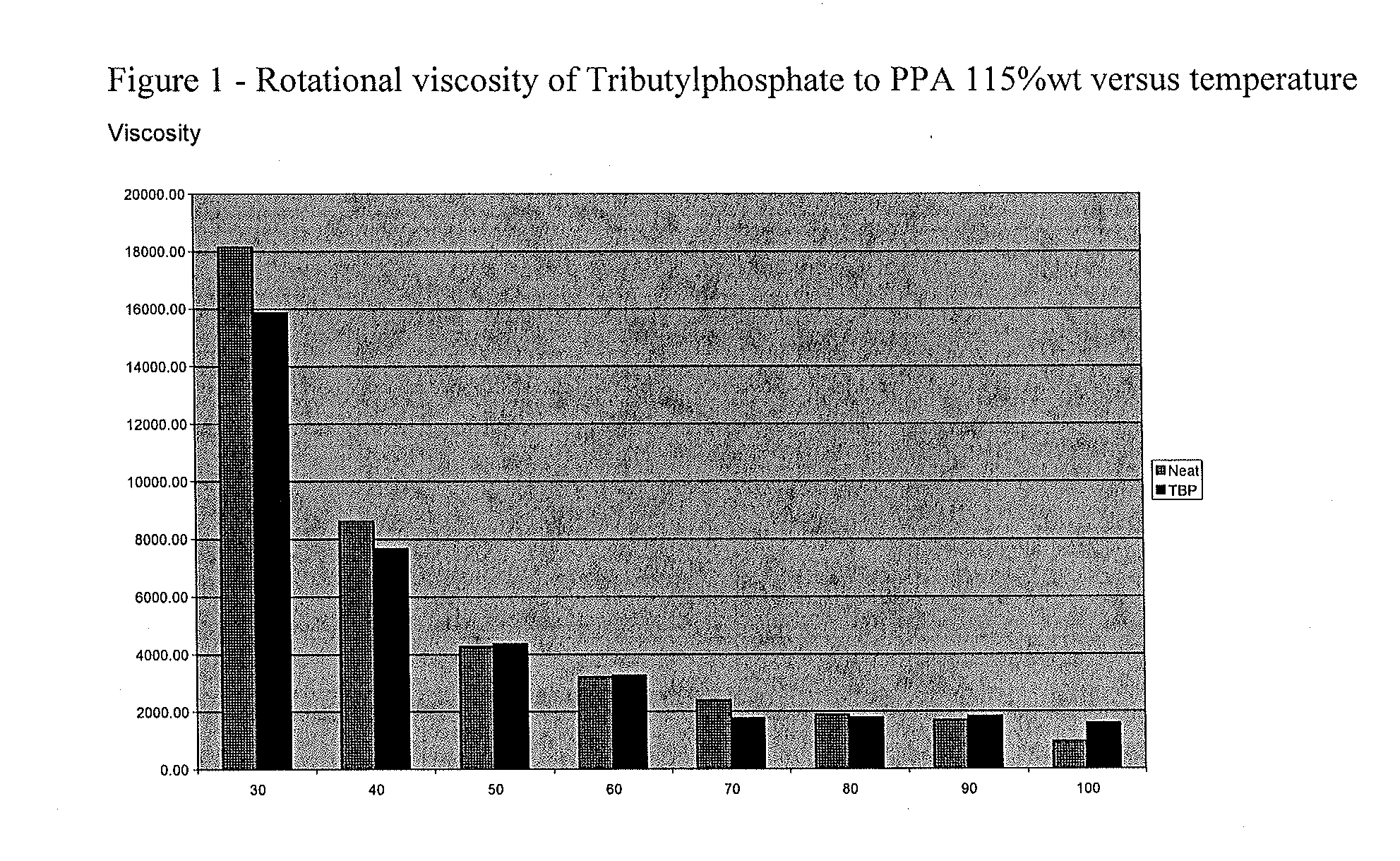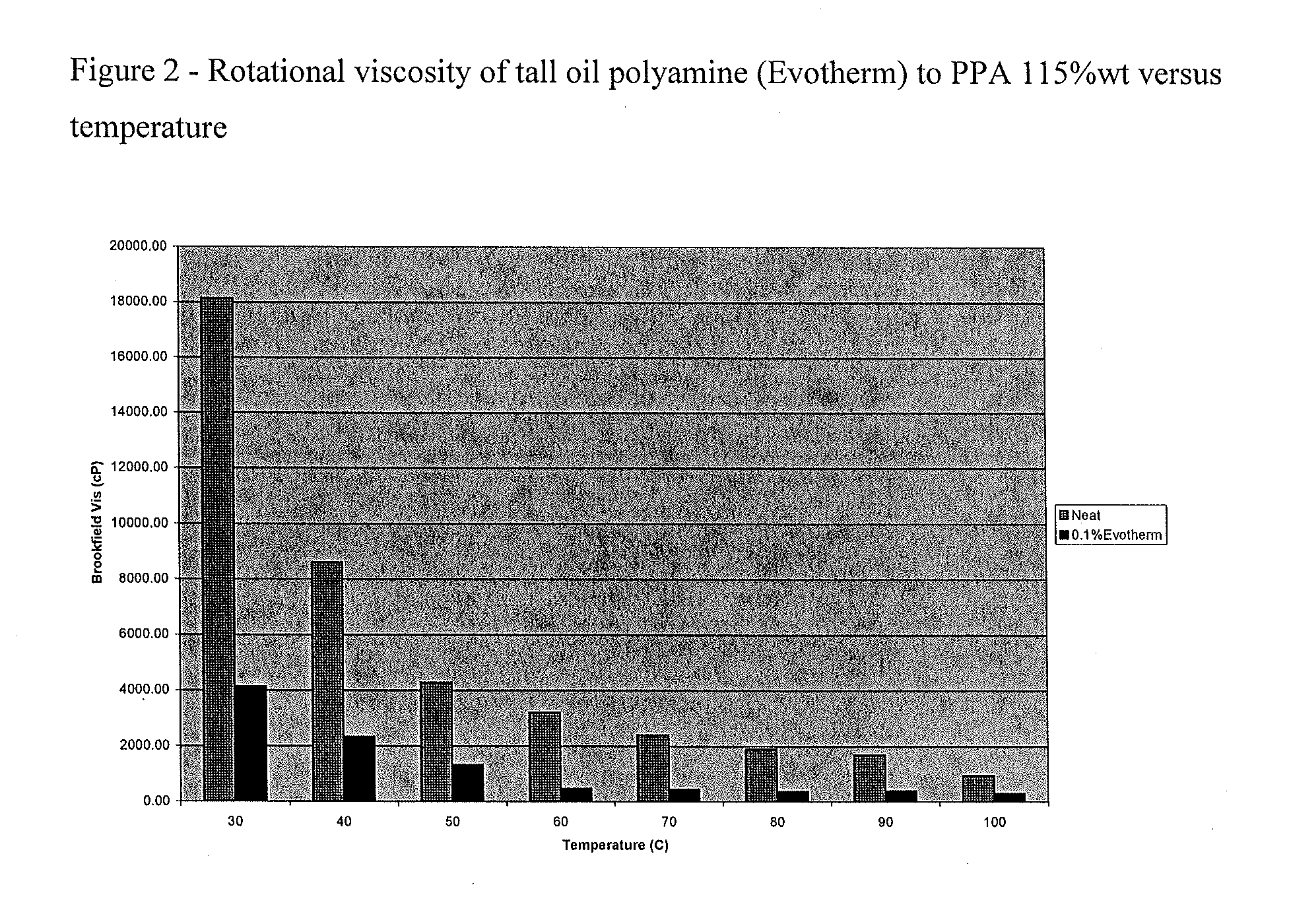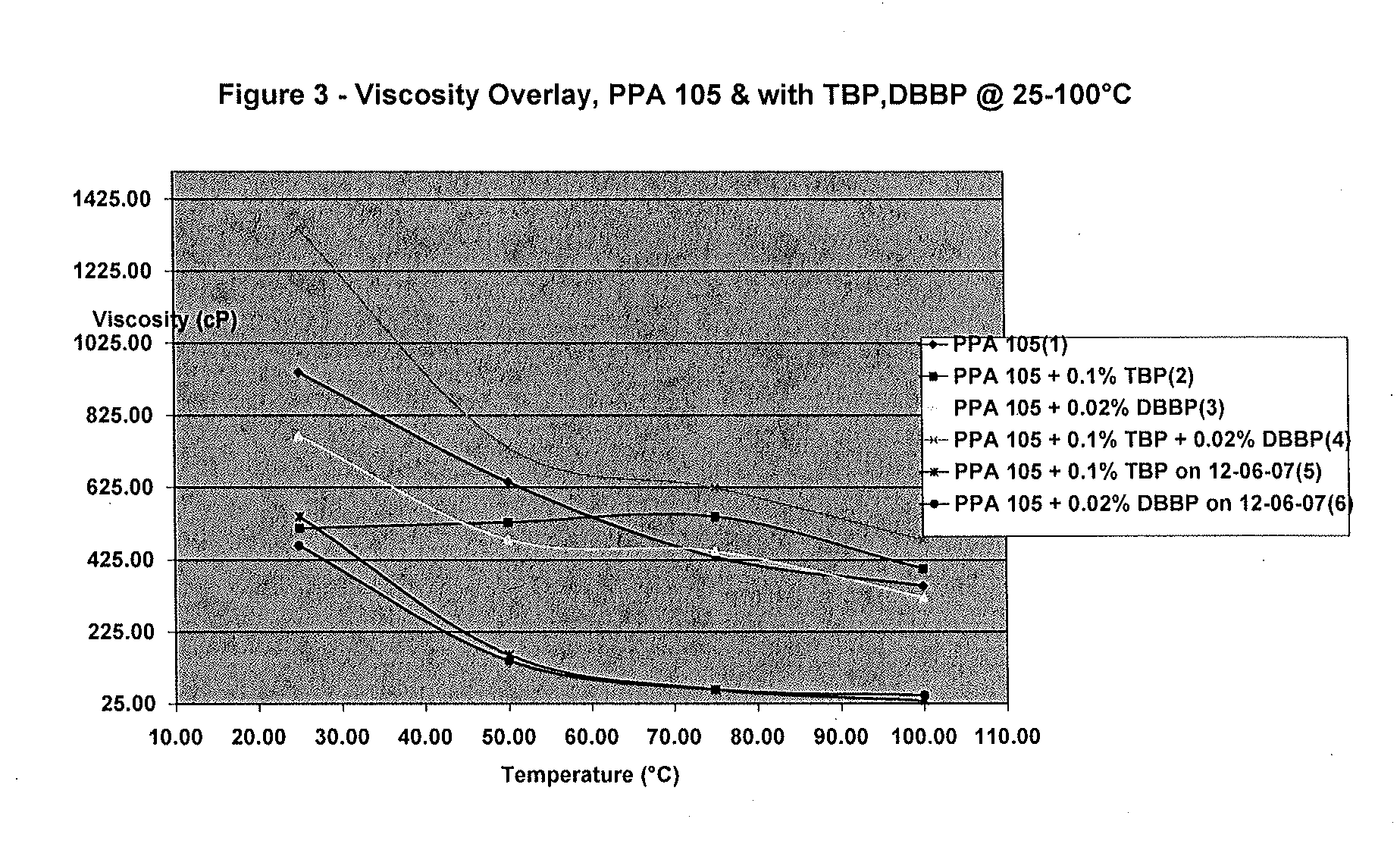Polyphosphoric acid compositions having a reduced viscosity
a polyphosphoric acid and composition technology, applied in the field of polyphosphoric acid compositions having a reduced viscosity, can solve the problems of increased ppa temperature not being desirable, increased ppa temperature, and sometimes stored in plastic containers that are not able to withstand the required higher temperature, so as to reduce the viscosity of the polyphosphoric acid composition, and reduce the viscosity
- Summary
- Abstract
- Description
- Claims
- Application Information
AI Technical Summary
Benefits of technology
Problems solved by technology
Method used
Image
Examples
example 1
[0016]In this example, tributylphosphate (TBP) was added to PPA having a concentration of 115% wt expressed as H3PO4 content to achieve a concentration of 0.1% by weight TBP. The viscosity of neat PPA (i.e. PPA 115% wt.) was measured at temperatures ranging from 30° C. to 100° C. and compared to the viscosity of the TBP / PPA mixture. The results are shown in FIG. 1.
[0017]As can be seen in FIG. 1, the addition of TBP slightly reduced the viscosity of the PPA at low temperatures, and had less effect on the viscosity at higher temperatures.
example 2
[0018]In this example, Evotherm™ J1, a tall oil polyamine, was added to PPA having a concentration of 115% wt expressed as H3PO4 content to achieve a concentration of 0.1% by weight Evotherm in the PPA. The viscosity of neat PPA (i.e. PPA 115% wt.) was measured at temperatures ranging from 30° C. to 100° C. and compared to the viscosity of the 0.1% Evotherm / PPA mixture. The results are shown in the chart in FIG. 2.
[0019]As can be seen in FIG. 2, the viscosity of the Evotherm / PPA mixtures is greatly reduced at all temperatures as compared to neat PPA.
example 3
[0020]In this example, TBP and / or DBBP (dibutyl butyl phosphonate) was added to PPA having a concentration of 105% wt expressed as H3PO4 content. The viscosity of neat PPA (i.e. PPA 105% wt.) was measured at temperatures ranging from 30° C. to 100° C. and compared to the viscosity of various mixtures of the PPA with TBP, DBBP or combinations of TBP and DBBP. Two of the tests used “aged” PPA, i.e. PPA that had been produced in December 2007, while the remaining tests used PPA that had been more recently produced. The results are shown in the chart in FIG. 3.
[0021]This data illustrates that the effect of TBP on the viscosity of PPA depends on both the temperature and the age of the PPA. As shown in FIG. 3, the effect of the addition of TBP and DBBP was greater in tests using the “aged” PPA.
PUM
| Property | Measurement | Unit |
|---|---|---|
| temperatures | aaaaa | aaaaa |
| temperatures | aaaaa | aaaaa |
| viscosity | aaaaa | aaaaa |
Abstract
Description
Claims
Application Information
 Login to View More
Login to View More - R&D
- Intellectual Property
- Life Sciences
- Materials
- Tech Scout
- Unparalleled Data Quality
- Higher Quality Content
- 60% Fewer Hallucinations
Browse by: Latest US Patents, China's latest patents, Technical Efficacy Thesaurus, Application Domain, Technology Topic, Popular Technical Reports.
© 2025 PatSnap. All rights reserved.Legal|Privacy policy|Modern Slavery Act Transparency Statement|Sitemap|About US| Contact US: help@patsnap.com



